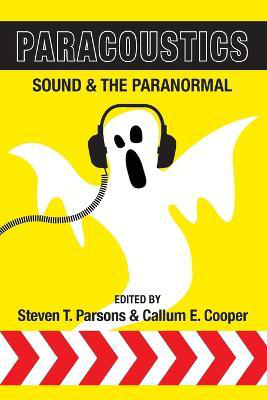Ghost Hunting Myth: Why Airplane Mode Won’t Silence the Signals
Ghost/Paranormal
Wednesday 28th, May 2025
3 minute read.
In the field of paranormal investigation, signal clarity is essential. Investigators rely on a variety of sensitive equipment, such as EMF meters, EVP recorders, and spirit boxes, to detect potential anomalies. One common precaution is asking team members to switch their phones to airplane mode to prevent unwanted interference. While this is a helpful step, it’s important to understand what airplane mode actually does, and what it does not, especially when interpreting unusual readings.
What Airplane Mode Does
When activated, airplane mode disables most wireless communications on a device, including:
What It Doesn’t Do
Despite its usefulness, airplane mode is not a shield against all external signals. It only stops the phone it’s enabled on from emitting signals. It does not block:
Common Misunderstandings in the Field
Paranormal investigators sometimes assume that airplane mode will create a “quiet zone” free from digital interference. While it can reduce one potential source of interference, it does not eliminate RF noise in the environment. An EVP session, for example, may still pick up unexplained interference even if all phones are set to airplane mode, because that interference could come from an outside source.
Another misconception is that airplane mode protects devices from being “affected” by signals around them. That is incorrect. Airplane mode stops active communication, but it does not block passive exposure to signals already in the area.
To truly isolate equipment from all electromagnetic interference, a Faraday cage, a physical enclosure made from conductive material, is required. These enclosures block external signals entirely, unlike software-based modes like airplane mode.
What This Means for Investigations
If investigators are experiencing unexplained interference on their devices or equipment, airplane mode should be used—but it’s only the first step. Further steps might include:
Conclusion
Airplane mode is a useful tool for reducing interference during paranormal investigations, but it is not a guarantee of signal isolation. It only affects the device it’s used on and cannot block external signals from affecting your equipment. For truly interference-free data, physical shielding or full power-downs may be necessary.
Understanding the limits of airplane mode is key to keeping investigations focused, data clean, and interpretations grounded in reality.
What Airplane Mode Does
When activated, airplane mode disables most wireless communications on a device, including:
- Mobile signals: The phone disconnects from cellular towers, stopping calls, text messages, and mobile data.
- Wi-Fi and Bluetooth: Wireless connections to the internet and other devices are switched off.
- NFC (Near-Field Communication): Used for contactless functions, this is also disabled.
What It Doesn’t Do
Despite its usefulness, airplane mode is not a shield against all external signals. It only stops the phone it’s enabled on from emitting signals. It does not block:
- Radio waves from nearby phones that are not in airplane mode
- Wi-Fi signals from routers or other devices in the area
- Mobile towers or local base station transmissions
- Satellite transmissions
- GPS (which continues to receive signals even in airplane mode)
- EMF sources like power lines, transformers, or common electrical devices
Common Misunderstandings in the Field
Paranormal investigators sometimes assume that airplane mode will create a “quiet zone” free from digital interference. While it can reduce one potential source of interference, it does not eliminate RF noise in the environment. An EVP session, for example, may still pick up unexplained interference even if all phones are set to airplane mode, because that interference could come from an outside source.
Another misconception is that airplane mode protects devices from being “affected” by signals around them. That is incorrect. Airplane mode stops active communication, but it does not block passive exposure to signals already in the area.
To truly isolate equipment from all electromagnetic interference, a Faraday cage, a physical enclosure made from conductive material, is required. These enclosures block external signals entirely, unlike software-based modes like airplane mode.
What This Means for Investigations
If investigators are experiencing unexplained interference on their devices or equipment, airplane mode should be used—but it’s only the first step. Further steps might include:
- Asking all participants to power off their devices entirely
- Scanning the area for sources of external RF interference (e.g. nearby mobile towers, Wi-Fi routers, or walkie-talkies)
- Using RF detectors to locate hidden or unknown signal sources
- Employing shielded containers for especially sensitive gear
Conclusion
Airplane mode is a useful tool for reducing interference during paranormal investigations, but it is not a guarantee of signal isolation. It only affects the device it’s used on and cannot block external signals from affecting your equipment. For truly interference-free data, physical shielding or full power-downs may be necessary.
Understanding the limits of airplane mode is key to keeping investigations focused, data clean, and interpretations grounded in reality.



